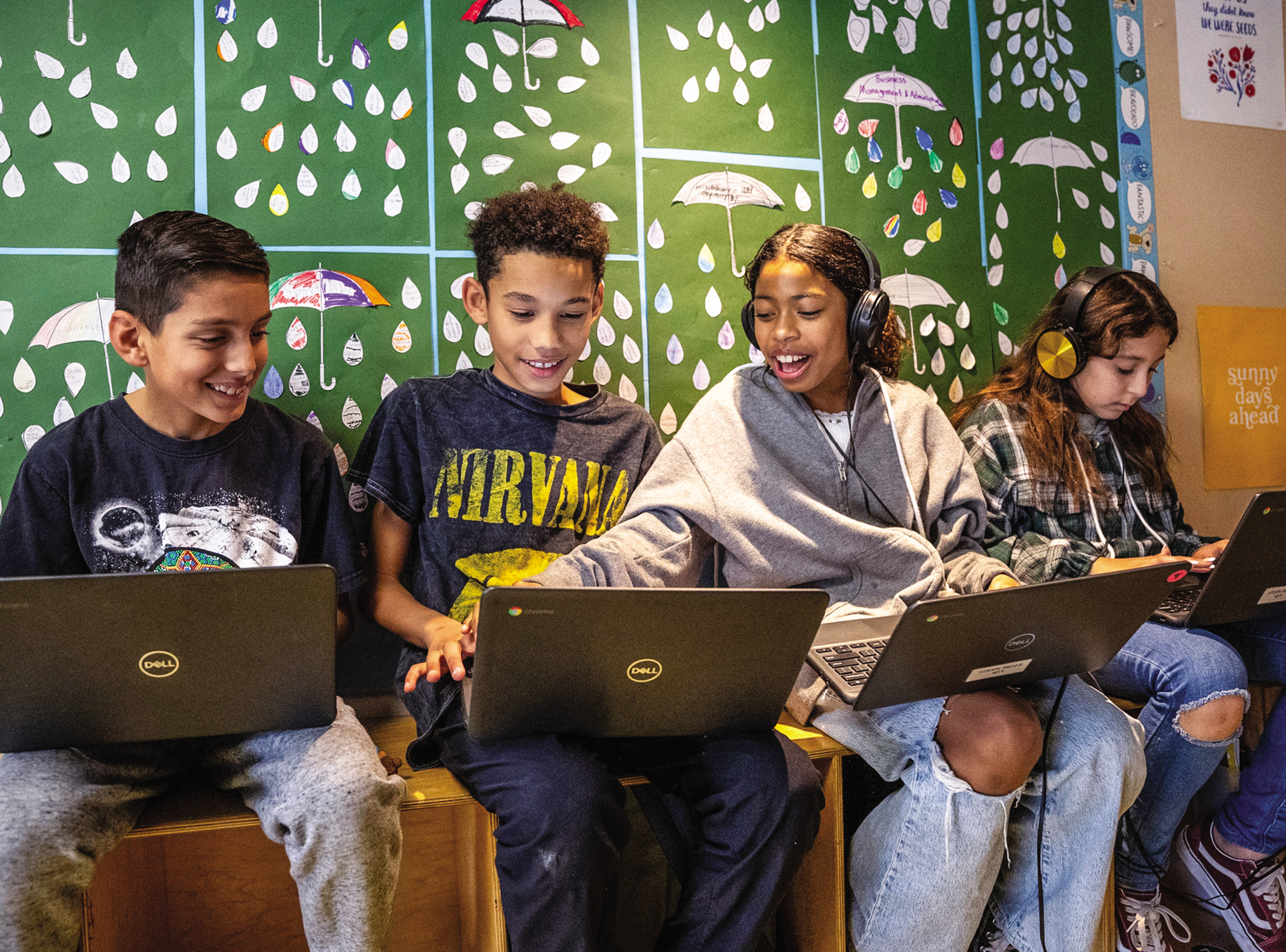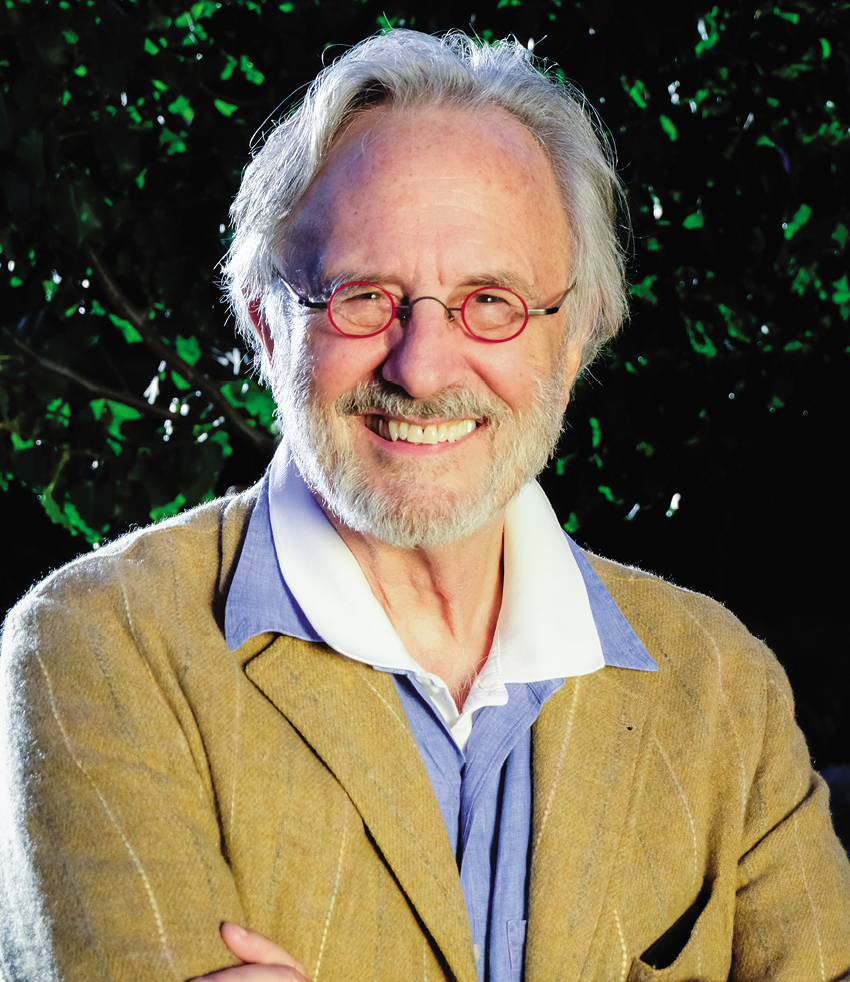All Means All
August 01, 2024
Schools where students living in poverty thrive typically operate with a pair of key design principles

Today, we know how to bring hope to the five million American children who live with families in deep poverty who struggle to survive on annual incomes of $15,000 or less. As I traveled the country visiting high-poverty schools, I was inspired by how a passion for equity can lead to educational inclusion, justice and reinvention.
In visits to school communities, I learned from teachers and school leaders that children living in deep poverty don’t need special schools or classrooms. They need 21st-century schools led by educators dedicated to a simple but profound principle: All means all.
The new science of learning and development offers us an evidence-based strategy for ensuring all children can learn. We know learning continues throughout the human life cycle. We know an empty stomach and material deprivation impair social and neurological functioning and disrupt learning. We know creativity and community are sparked by connection and compassion.
Design Principles
These findings present a golden opportunity for synthesizing the best research and practice into transformational design principles, two of which hold promise for turning around struggling high-poverty schools into learning institutions that are second to none.
Design principle one: Create communities of compassion, inclusion and identity-safety.
Design principle two: Create communities of intellectual excitement, rigor and relevance.
These two design principles form the DNA for transforming high-poverty schools into vibrant learning communities.
Compassion at Core
Compassion is the heartbeat of community. Compassion is the emotional fuel that fires change.
In the rural South, I visited a middle school that served the children of a migrant community. Many families lived in trailers without running water. Their only water supply was a hose attached to a post. The family used the hose for its cooking water, for laundry and for bathing.
Fortunately, the principal of the school had the vision to install showers in her school and provided students with clean clothes, combs, toothbrushes and shoes. She and her teachers maintained a robust backpack program to ensure students had food after school and on holidays. Compassion turns empathy into action.
Inclusion is the weaver of family connections. Inclusion is defined by four elements: relationships, shared experiences, advocacy and a sense of identity.
For the indigenous Polynesian people of New Zealand, the deeper meaning of inclusion is captured in one word, Kairaranga, the weaver of family connections. A Midwestern school in a community of concentrated poverty forged these family connections in the spirit of solidarity. When I visited the school, there was laughter in the halls, classrooms were alive with learning, and teachers cared for their students.
The principal came from the community and spoke of the students as “our kids.” Before leaving for the day, he invited me to join him for a student pep rally. On that day, even the teachers were ready to rock and roll, trying hard to dance to the good-hearted amusement of the students. The place was alive with the energy and joy of happy young people. Inclusion is living in connection with each other.
Identity-safety is the love of somebodiness. In 1967, Martin Luther King Jr. addressed the students at Barratt Junior High School in Philadelphia with these stirring words: “No. 1 in your life’s blueprint should be a deep belief in your own dignity, your worth and your own somebodiness.”
In their recent Learning Policy Institute study of the Social Justice Humanitas Academy in California’s San Fernando Valley, Marisa Saunders, Lorea Martínez, Lisa Flook and Laura E. Hernández reported how community connections and networks can result in school cultures where all students are somebody.

They quote one student living in deep poverty on what these supports meant to him: “I lived in really bad poverty and never saw myself even going to high school or college. ... That wasn’t in the plan for me. Orientation [at SJ Humanitas] really got my attention and it made me believe in myself. The teachers and mentors were working with me one-on-one. I became very good at reading, [got] high test scores and began doing [well] in school, but they were not only focusing on my academics but what I was going through. I was going through very emotional hard stuff. The counselor[s] took their time talking to me and making sure I was OK. ... It really stuck with me, knowing that I can seek out help and that I’m not going to be shamed.”
Being somebody is the heart of feeling you are recognized and respected.
Intellectual Growth
Intellectual excitement is the yearning to share learning with others. In the words of the educational visionary Henry Levin and his colleagues, “Accelerate, don’t remediate.” Every child is a deep learner.
In one high-poverty school I visited, a math teacher put aside convention and created a classroom of high energy with division problems on the blackboard and chess boards on every table. The teacher was neither a sage on the stage nor a guide on the side. She was the lead musician in a learning jazz ensemble, listening, explaining and correcting in near-perfect rhythm with her class. The word synchrony came to mind. Connection is the human electricity of learning.
Like all students today, those living in deep poverty want to solve problems. What if they were asked to find ways to ease the global water crisis? Many living in deep poverty experience water shortages, inadequate plumbing and contaminated drinking water. They have a personal stake in the struggle for abundant, uncontaminated and cost-free water.
Given the freedom to think for themselves and empowered with the right scientific and social scientific tools, students could develop a compelling, intellectually exciting curriculum, enhanced with readings, guest speakers, field trips, simulations and games that would ignite curiosity, inventiveness and collaboration. It would be a full immersion, action-oriented learning experience.
Rigor is an expression of talent. No one has to be told to be rigorous if he or she is fully intellectually and emotionally engaged. True rigor grows from within and fosters discovery.
We have learned too much from the science of learning and development to equate rigor with test scores. Our assessments of rigor ought to encourage demonstrations of talent in multiple modalities, such as portfolio projects, presentations, posters and the use of technology.
High Tech High in San Diego is an example of this approach to learning. Students are empowered to break new intellectual ground by developing portfolios with intriguing names such as A Fight with Gravity, Planting Community and Spaceship Earth.
High Tech High’s mission statement captures what all means all looks like in practice: “High Tech High is an equity project. Teachers work to address inequities and help students reach their full potential.”

Cultural Relevance
Relevance is an invitation to learning for the whole child. At the heart of relevance is deep pride in who we are. Students living in deep poverty experience injustice every day. What they study, how they study and who teaches them is the difference between alienation and attachment.
In one deep-poverty urban school, the power of cultural relevance was dramatically brought home to me. The school is located in a part of town where many buildings are abandoned or burned out, dollar stores and check cashing services are on most corners, and it appears the city planners have forgotten that streets need to be repaved on a regular basis for all citizens.
On the surface, the community looked distressed, but as it turned out, beneath the surface was a vibrant and proud culture. The school reflected this pride. The rich symbolic world of Mayan, Aztec and Toltec mural art in the hallways radiated vitality and vibrancy. Painted by a local artist, the murals announced to the world the somebodiness of the students who attended the school.
Relevance also means embracing a new kind of learning. Today’s students live in two worlds: one is the physical world, the other is the virtual world. Today’s students process information differently than previous generations. Their learning style is interactive and hands-on. They multitask easily, prefer graphics to text and often exhibit short attention spans. They learn independently and find nothing wrong in combining mediums to draw a conceptual picture that makes little linear sense but makes sense pictorially.
Everyone Counts
I visited a high-poverty school district in the South where a visionary superintendent had transformed the instructional technology department into a teaching and learning center led by the district’s teachers. Every student was given a laptop on the conviction that all students have a right to a 21st-century education.
We can create learning communities of care, compassion, inquiry and discovery for all students. It will take adequate and equitable funding, planning based on evidence and the will to reinvent a system of schools where all means all and where every student is somebody.
Peter Cookson is a senior research fellow at the Learning Policy Institute and teaches education policy at the McCourt School of Public Policy at Georgetown University in Washington, D.C. E-mail: petercookson10@gmail.com. He is the author of School Communities of Strength: Strategies for Educating Children Living in Deep Poverty (Harvard Education Press, 2024).
Advertisement
Advertisement
Advertisement
Advertisement



